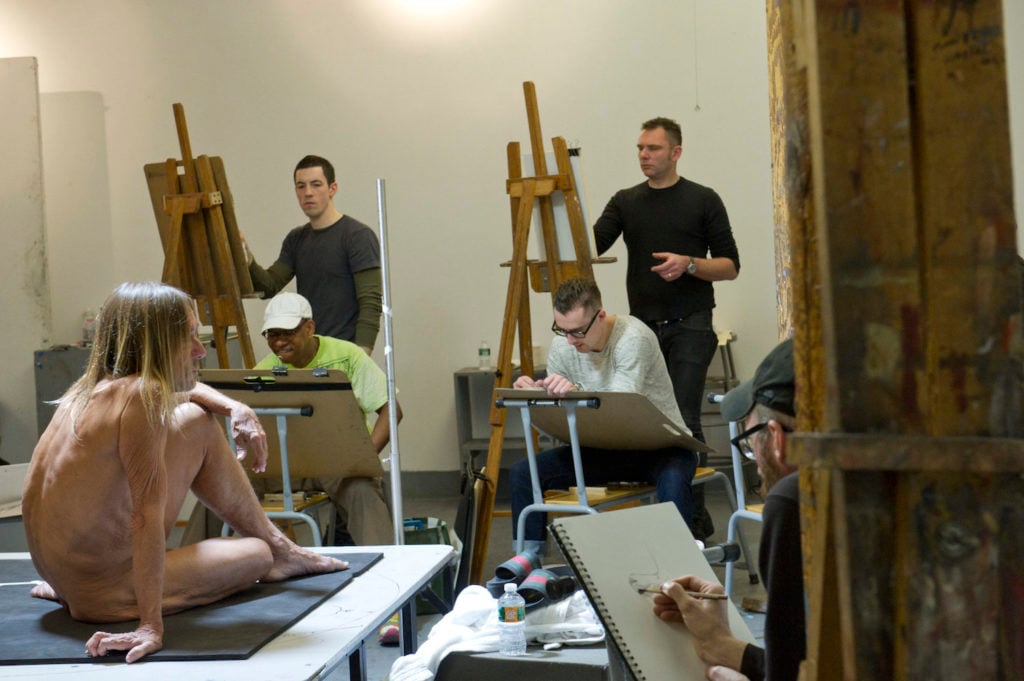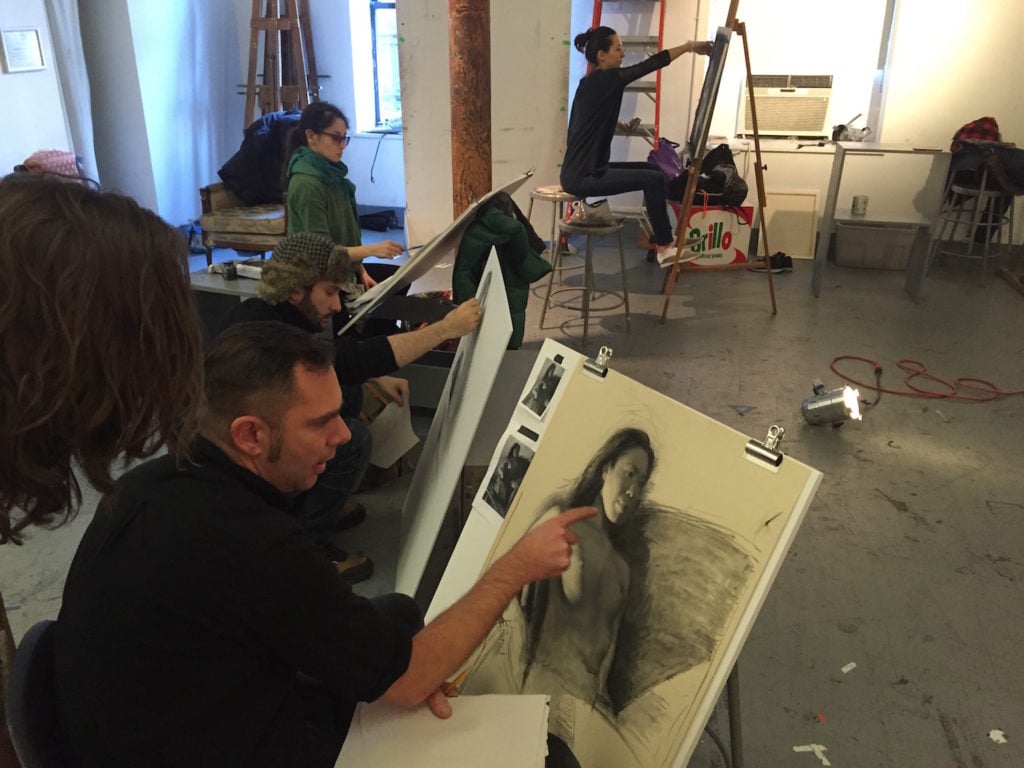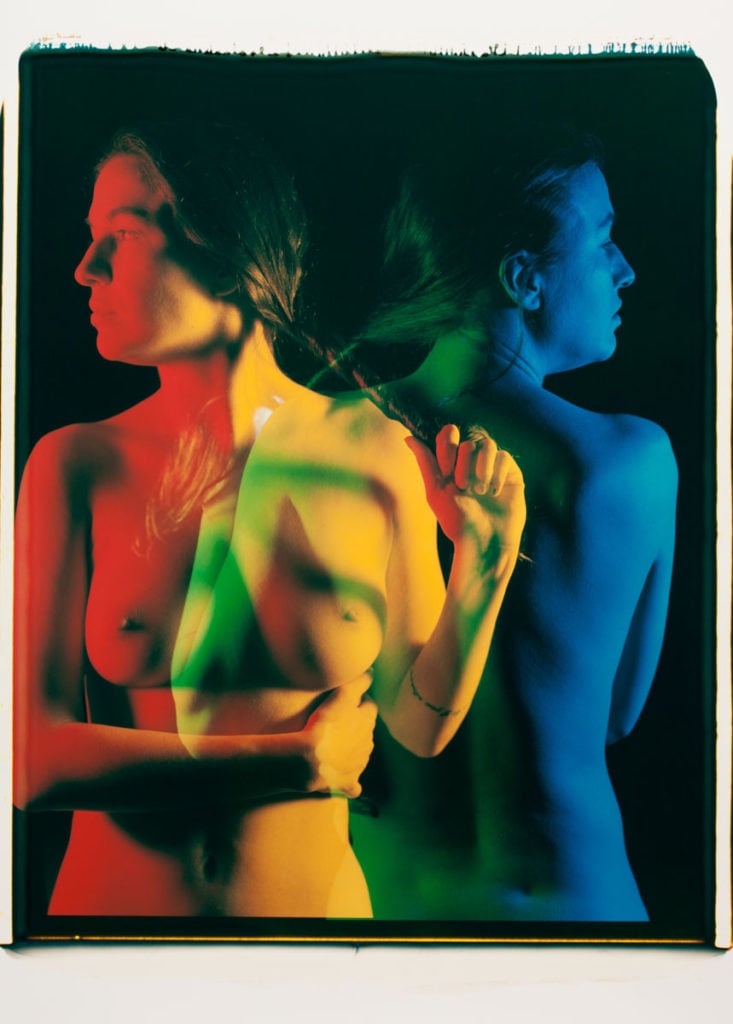Art World
The Dos and Don’ts of Working With Nude Models: 6 Steps for Keeping Things Professional
The allegations against Chuck Close raise new questions about how to work with nudity. Here's a guide for artists and models.

The allegations against Chuck Close raise new questions about how to work with nudity. Here's a guide for artists and models.

Sarah Cascone

Last month, several women came forward with complaints that artist Chuck Close sexually harassed them while they were modeling in his studio. The allegations, published in the Huffington Post and Hyperallergic, tended to follow a common pattern: A woman was invited to pose for the artist, asked to undress, and then endured lewd sexual remarks from Close. The women tended to leave feeling exploited and disrespected, they said.
From time immemorial, the nude body has played a vital function in art across cultures and eras. But in the 21st century, we have come to expect a certain level of professionalism to safeguard both models and artists in what can be a sensitive interaction.
Regardless of one’s opinions about Close, the controversy offers a teaching opportunity: What is and is not acceptable behavior when it comes to working with nude models?
artnet News spoke with two nude models and the director of the drawing department at the New York Academy of Art, which relies heavily on figure drawing in its curricula, and provides handbooks outlining protocols to its roster of around 68 models. From these interviews we compiled a list of guidelines for both the artist and model.

Michael Grimaldi teaching figure drawing. Courtesy of the New York Academy of Art.
Some of the women who complained about Close said that they went to his studio with the belief that he would paint their face for a large-scale portrait. They were not expecting to be asked to take off their clothes, they said.
“Most of the time the artist and the subject discuss ideas about what the concept of the final product will look like, including the wardrobe or lack thereof,” said Natalie White, an artist and model, who has posed nude for George Condo, Peter Beard, Marc Quinn, Spencer Tunick, and Close himself.
“If the model isn’t well known for taking their clothes off it should definitely be discussed ahead of time. And if the artist feels that the subject should take their clothes off in the middle of the session, they should schedule the unclothed session for a later day to give the model a chance to think about it,” said White, but pointed out that there may be exceptions with models who frequently pose nude. Otherwise, a model may change her mind afterward, meaning “you’ve just wasted time and resources on something you may not be able to use, or left the model feeling bad about what they have just done.”
The British actors’ union has laid this issue out in its code of conduct, which states that “any nudity/semi nudity will be personally approved by the model before the shoot takes place.”

Photo courtesy of Natalie White.
That is the most important rule, said White. “Don’t move their arm to a different angle, don’t touch their face to change the angle in which it’s tilted,” she says. “If you want a nude model to alter their pose it should be described with words, or the photographer or artist can show them by [demonstrating with their own body].”
Michael Grimaldi, faculty chair and director of New York Academy of Art’s drawing program, agreed—but offered a few limited exceptions. “The only instances where [touching] may occur is during the marking of a long pose and, in my experience, during lectures focusing on anatomical structures. For instance, using calipers to measure a distance directly on the model or using resistance to activate a muscle action. Whatever the circumstance, any potential physical contact is brought up beforehand, always with consent, boundaries respected, and exclusively work-based and professional.”

George Condo, Toy Face with Ponytail (2014), a painting for which Natalie White posed nude. Courtesy of the artist/Skarstedt Gallery.
Carla Rodriguez, a former intern at New York’s 20×24 Studio, an instant photography studio that worked regularly with Close on his large-format Polaroid portraits, was invited to pose for the artist in 2009. She told Hyperallergic that she was surprised when Close allegedly asked her to undress beneath a spotlight in the darkened studio, rather than in a dressing room. “Having been a figure model, I’m used to being able to undress privately. It’s mostly inappropriate to take your clothes off in the middle of the classroom,” she said.
Like the artist, a model is a working professional and should be treated as such. “This includes making sure that the model stand, drapery, and props are clean and in place; that the model’s changing room is secure and clean; that the temperature is comfortable and additional space heaters are in place in consideration that the model will be nude and in a relatively static pose, potentially for an extended period of time,” said Grimaldi.
“If a nude subject is uncomfortable in any way, whether it’s the temperature being too cold or they want assistants out of the room, they should say so immediately,” said White. “You need to be direct about how you feel. If you are uncomfortable it will come out in the images, and for that reason the artist should want you to be comfortable because they understand that too.”

Kurt McVey modeling for the Artful Bachelorette. Photo courtesy of Kristy May/the Artful Bachelorette.
“I can’t stress enough, if you are uncomfortable in any way it’s really important for you to say it out loud,” said White. “Good people don’t want you to feel uncomfortable in a work environment, so if they don’t react well to you telling them you feel uncomfortable then they aren’t a good person and you probably are not in a good work environment.”
“Red flags for a model might be requests from students, requests to be photographed, inappropriate language, poses that might threaten their physical or mental comfort,” Grimaldi said. “That does not necessarily mean a sexual pose—it could even mean a pose that the model says would be physically difficult to execute and hold the pose for the necessary time.”
Some situations may be strictly silent, such as at the academy, where “students do not initiate conversation with the model,” Grimaldi said. But model Kurt McVey finds such buttoned-up atmospheres stifling.
That’s why he got involved with the Artful Bachelorette, which hosts nude figure drawing classes for brides-to-be and their friends. He was struck by the amount of laughter in the room, which he found to be “a counterbalance to the often pretentious New York art world,” McVey told artnet News.
“They encourage engagement with the model and the people in the class,” he said. “As the model, I’m providing a space for what I like to call consensual objectification!”
He finds the experience of modeling in this environment to be “continually cathartic and therapeutic for me as an individual—and incredibly liberating for the women.”

A party with nude figure drawing hosted by the Artful Bachelorette. Photo courtesy of the Artful Bachelorette.
Posing nude for a drawing or painting is a completely different beast than posing for a photograph—and permission for one does not imply permission for the other.
“Because cell phones have the capability of taking photographs (along with the instant ability to post images on social media), students are notified that cell phone use under any circumstance is strictly forbidden in the classroom,” said Grimaldi. “The models are also encouraged that should they see a cell phone, they have every right to terminate the pose.”